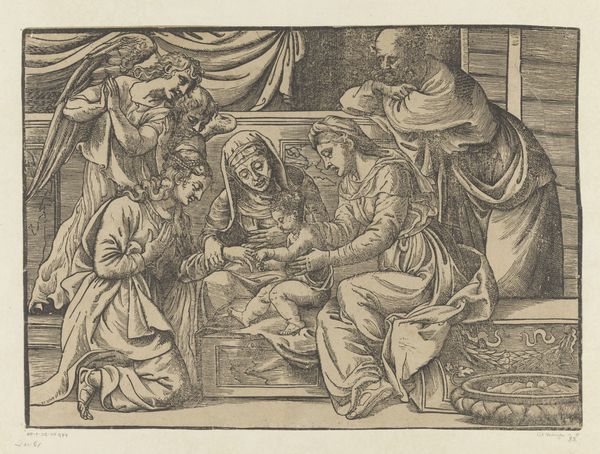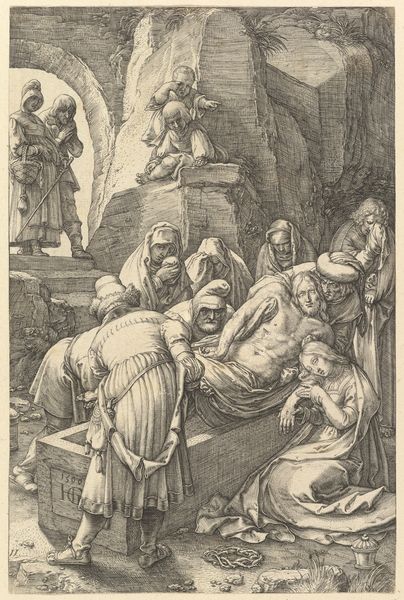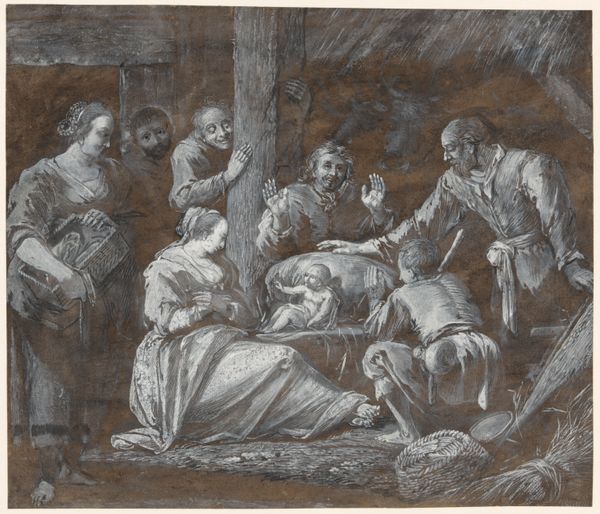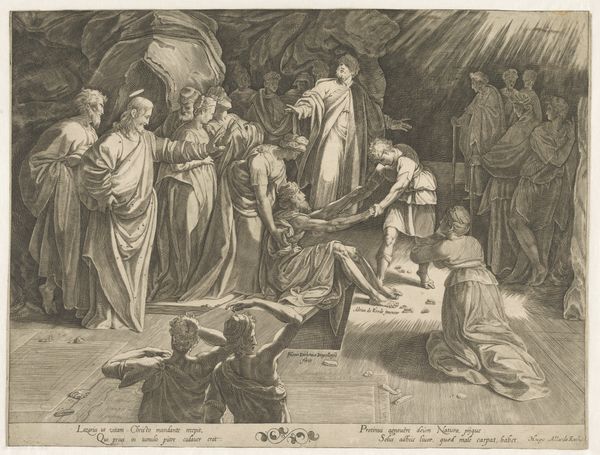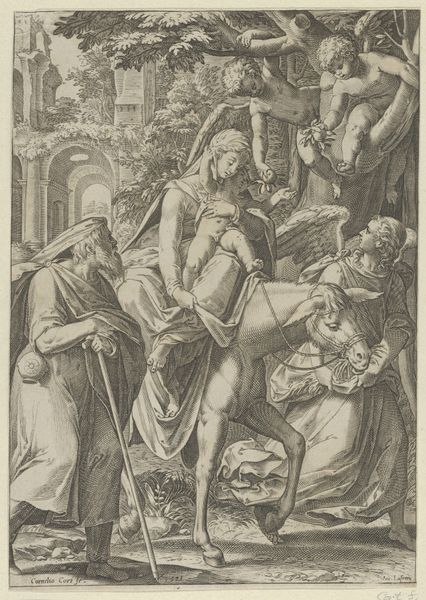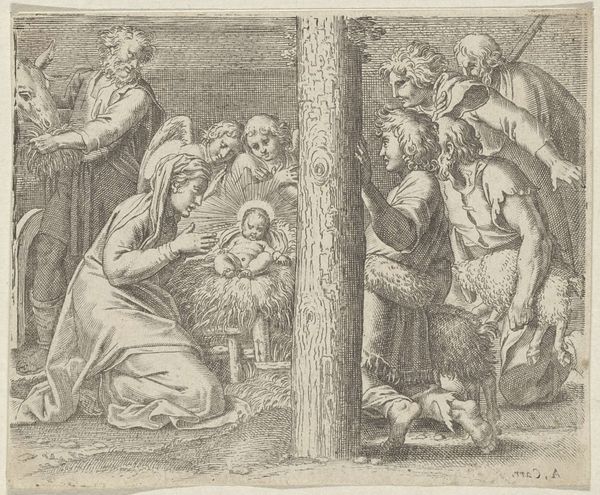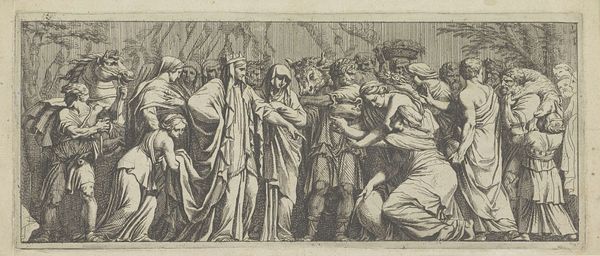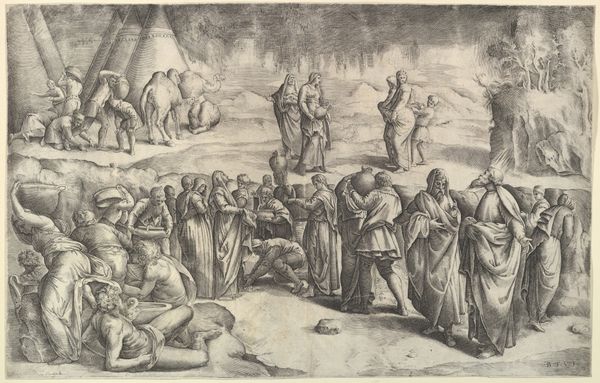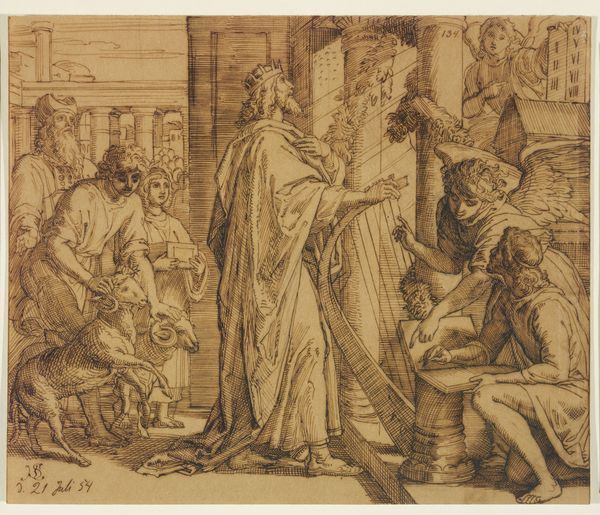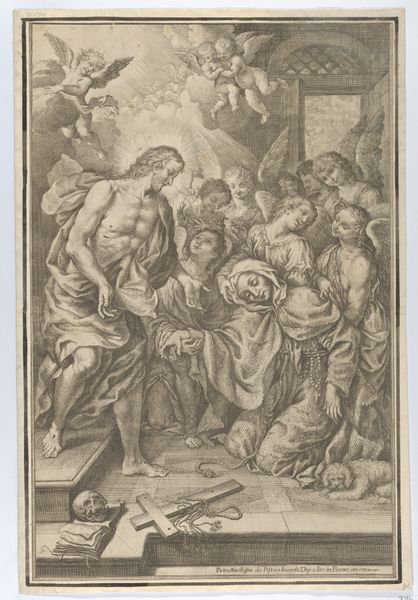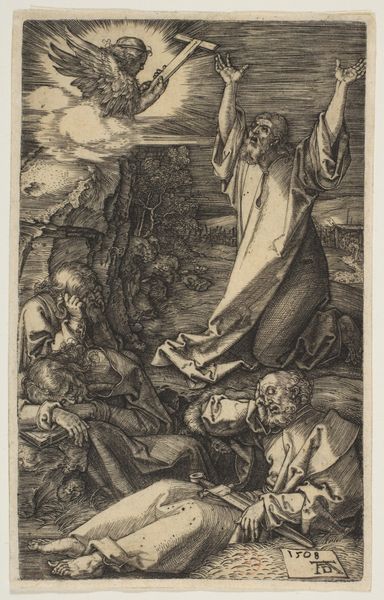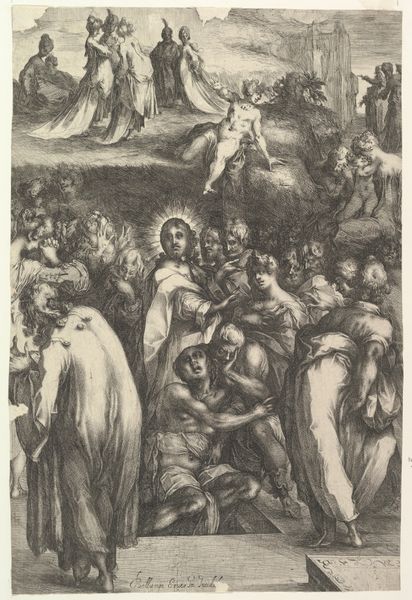
drawing, print, engraving
#
drawing
#
narrative-art
# print
#
figuration
#
11_renaissance
#
history-painting
#
italian-renaissance
#
engraving
#
virgin-mary
#
angel
#
christ
Dimensions: Sheet (Trimmed): 13 1/8 × 17 15/16 in. (33.3 × 45.6 cm)
Copyright: Public Domain
Curator: Well, this piece gives me the shivers, it feels both reverent and earthy. Editor: That’s quite a visceral reaction. Here, we’re looking at Giorgio Ghisi’s “The Nativity,” an engraving from 1553 currently residing at The Met. Quite a grand scene, isn't it? Curator: Grand is one word for it, a bit overcrowded maybe. All those folks, crammed into the stable, like it’s a celebrity baby meet-and-greet. Yet, it has this undeniable sincerity too, wouldn’t you say? Editor: Definitely crowded. Ghisi uses the dense composition, chiaroscuro, and varied textures, characteristic of Italian Renaissance prints. It’s less about idealized beauty and more about symbolic density, where the accumulation of figures, details, and visual elements serve to enrich the story being told. See the discarded architectural fragments—a symbolic depiction of the old order yielding to the new. Curator: I see that. And while those old relics decay, there’s almost a chaotic sense of movement, but with everyone focusing on this one, tiny point – baby Jesus. Almost as if to ask, ‘what’s all the fuss about? Editor: Yes, Ghisi masterfully composes and integrates many symbolic elements, making this rendering distinct. He clearly engages with Mannerist tendencies through dynamic grouping and sophisticated stylization. Curator: Mannerist. That's a heavy word for something that feels so tender, in its core. Like that kneeling figure on the left. He’s completely absorbed in his basket, probably wondering if his gift is good enough for the kid, a little insecure amidst all the pomp. Editor: Indeed. While Mary, adorned with her halo and angelic chorus is central to the composition, your eyes linger on peripheral elements—perhaps these reflect a kind of empathetic bridge between the divine and the human, mirroring Christ's earthly entry as told in scripture. Curator: Maybe. For me it's the simple human anxieties amid the big divine moments. As an artist, it reminds me that the miraculous often lands in the middle of the messy and the ordinary. Editor: Absolutely, a fine ending point.
Comments
No comments
Be the first to comment and join the conversation on the ultimate creative platform.
